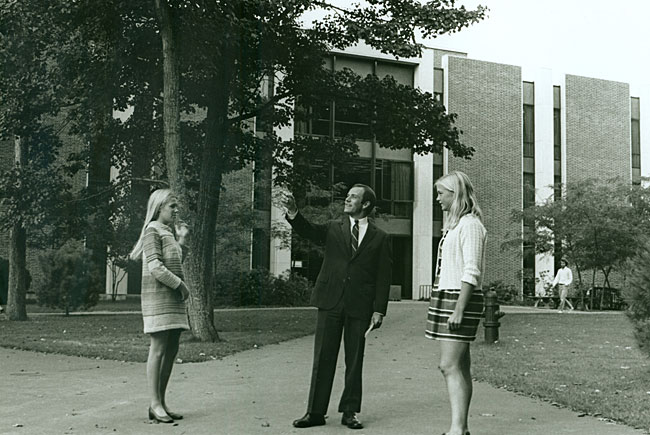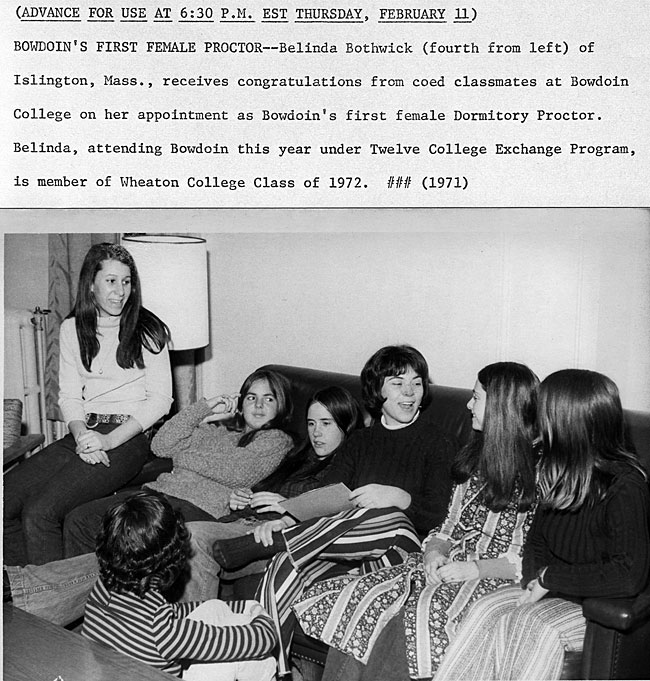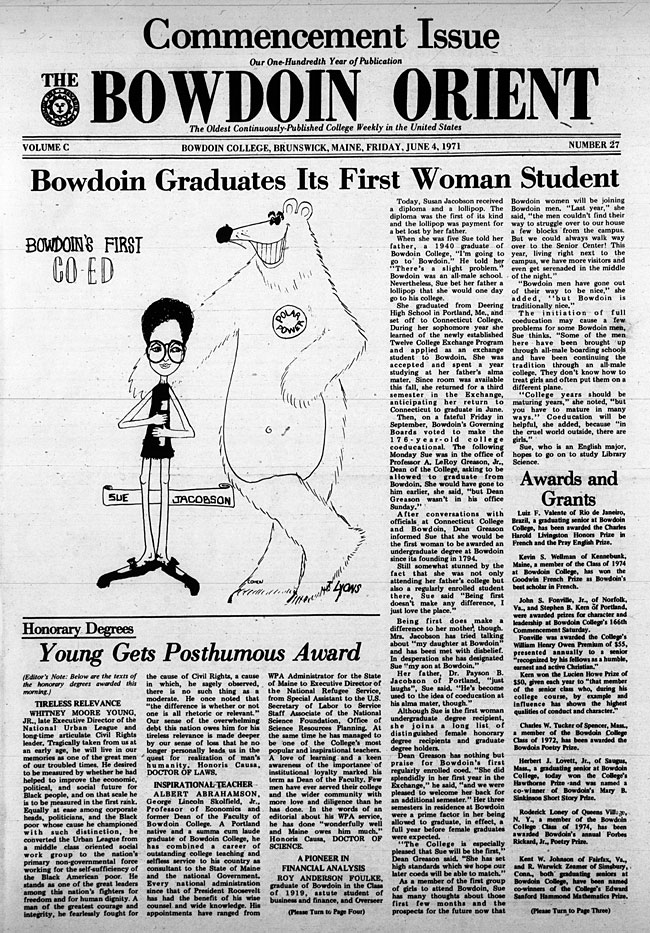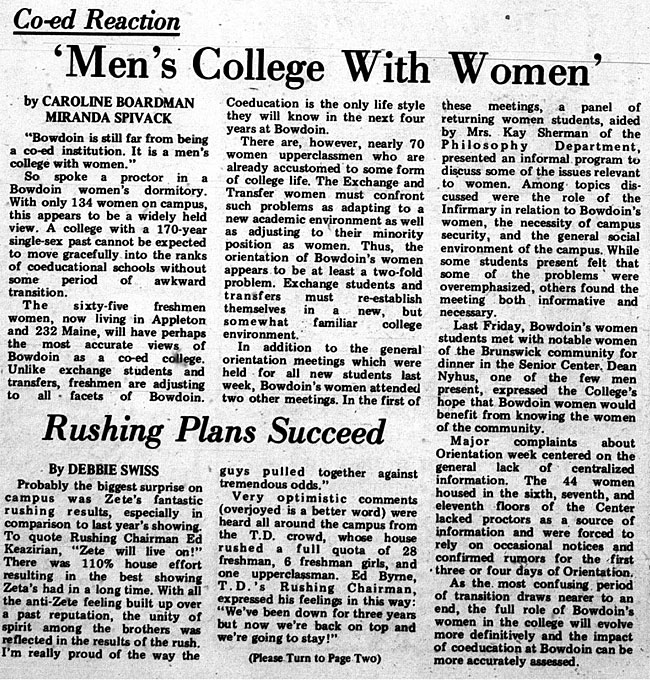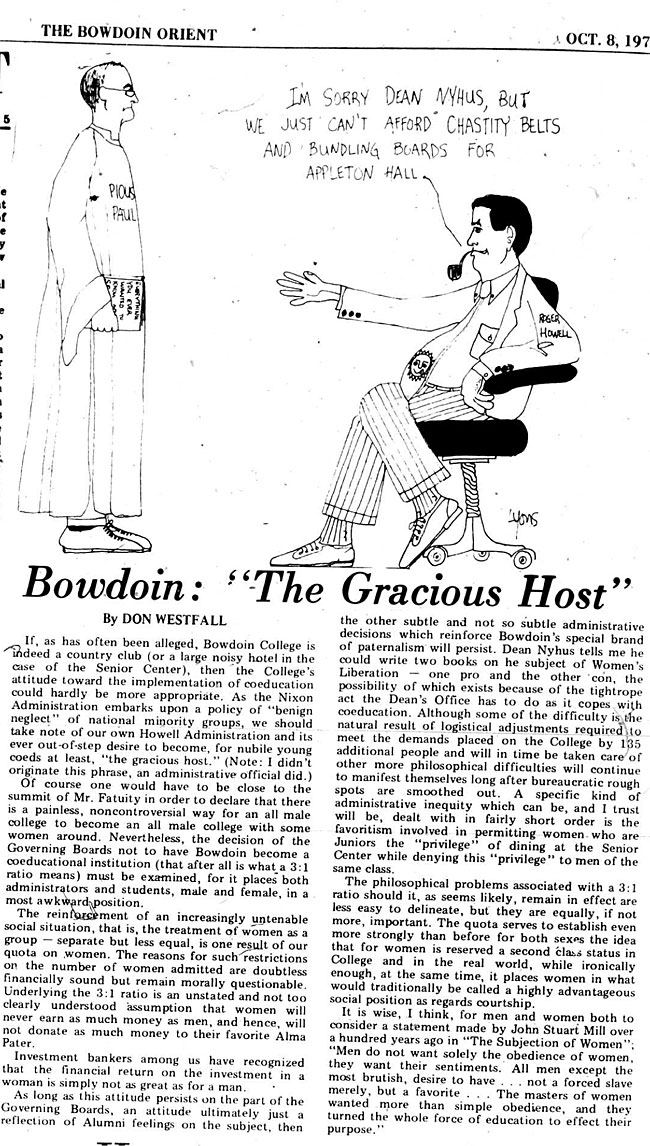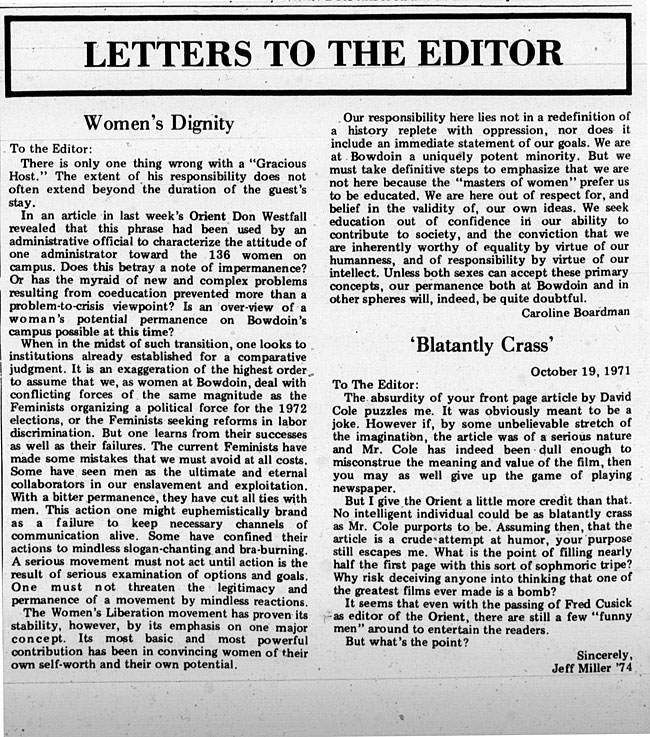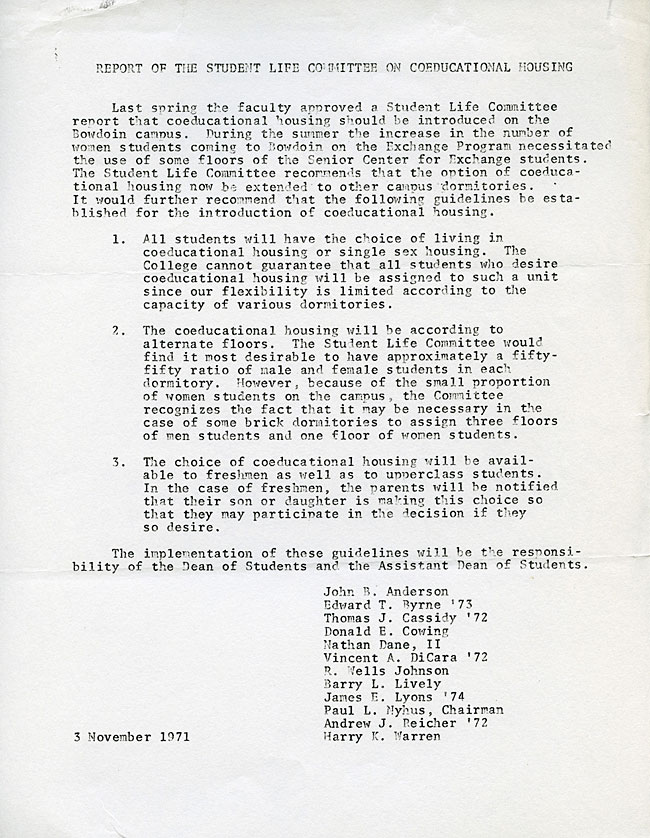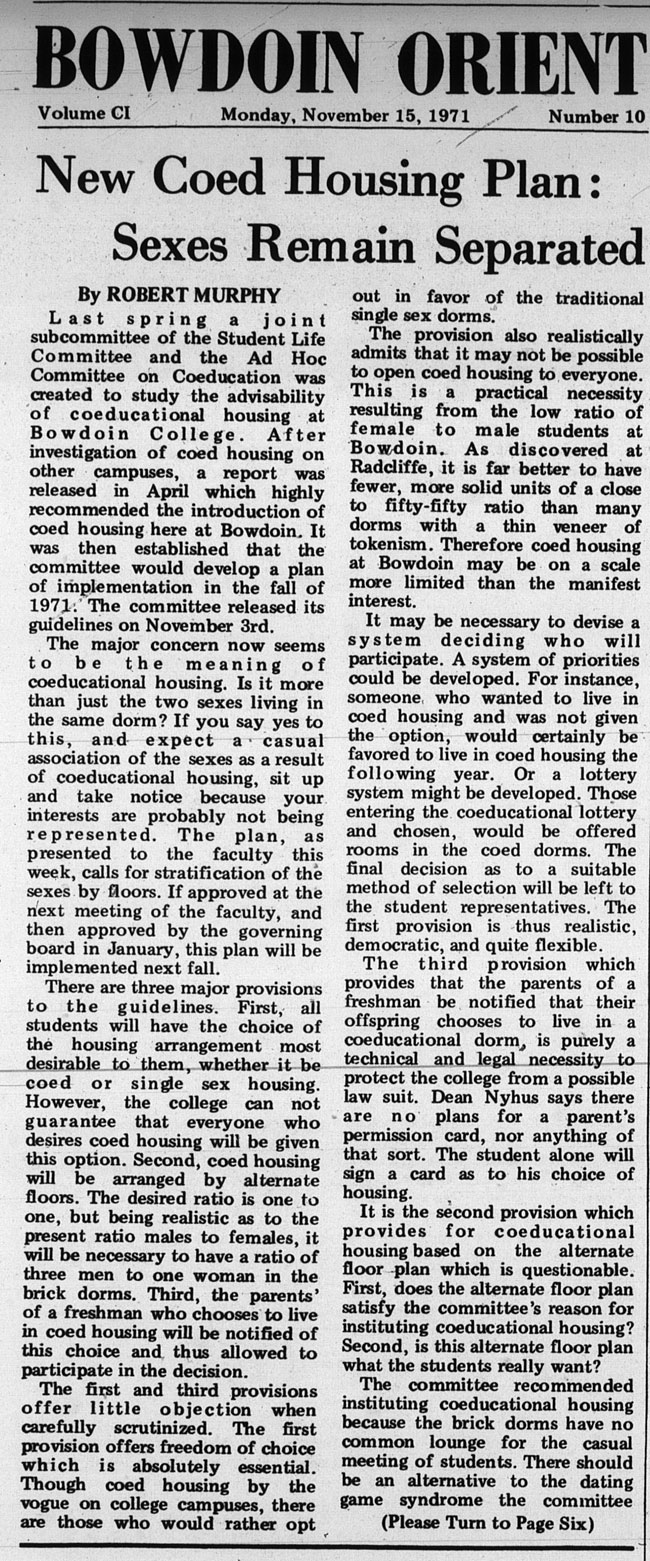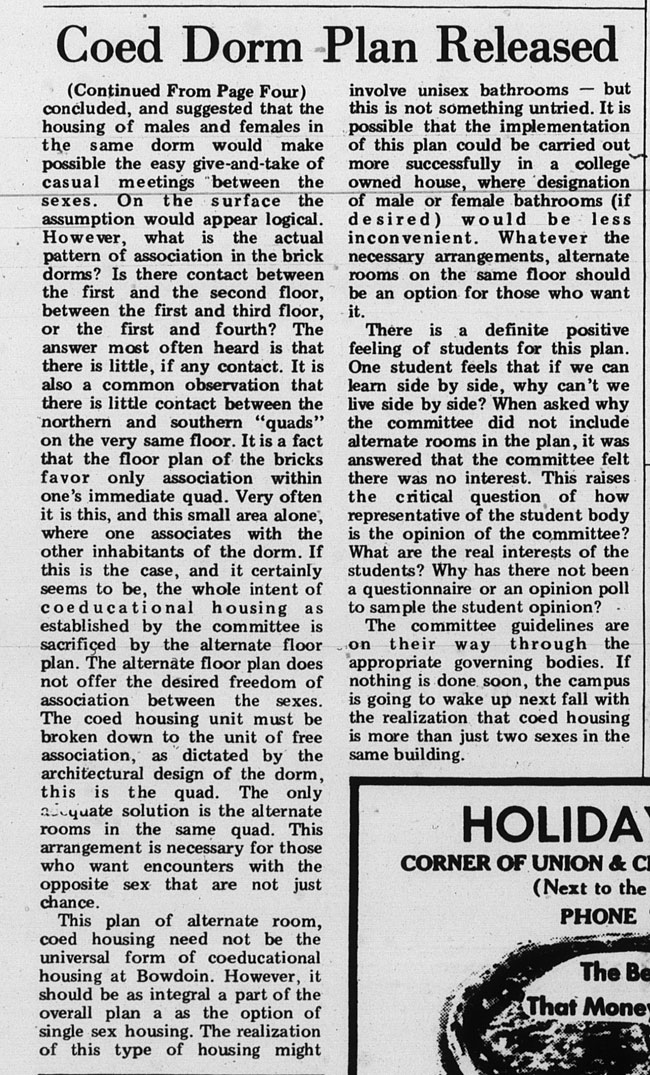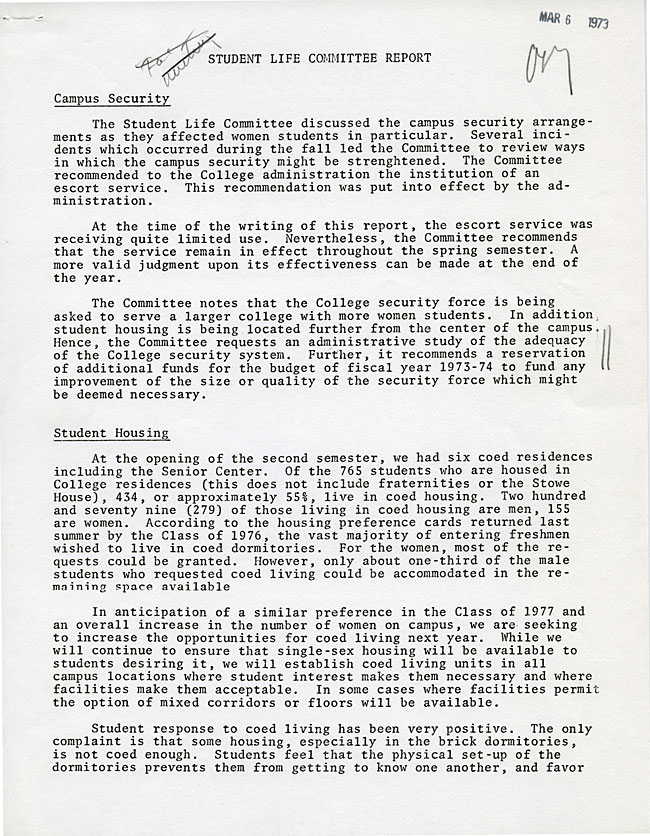Early Applicants and Bowdoin’s First Female Proctor
These two images depict watershed moments in the history of coeducation at Bowdoin. First, Director of Admissions Richard Moll is shown with two young women who are identified as the first two to apply to Bowdoin in 1970 (Document AK, 20.1). Certainly these two were among the first, but another document featured on this site makes the claim that yet another woman, Elissa Berry, was officially the first to apply. Although the two women in this image did not ultimately matriculate at Bowdoin, it is interesting to note how easily they might fit into a picture of Bowdoin women in 2011, as fashion trends have seemingly come full circle.
The second image depicts the first woman to become a dorm proctor, Belinda Bothwick, a member of the 12 College Exchange Program from Wheaton College (Document AK, 20.2). This is an interesting example of how some of these exchange students became truly integrated within the larger Bowdoin community.
Ultimately, these two historically important images invite as many questions as they provide answers. Who took these pictures? Are they candid or posed? Certainly each photo suggests that the novelty of being a woman at Bowdoin was important enough for these moments to have been photographically documented.
